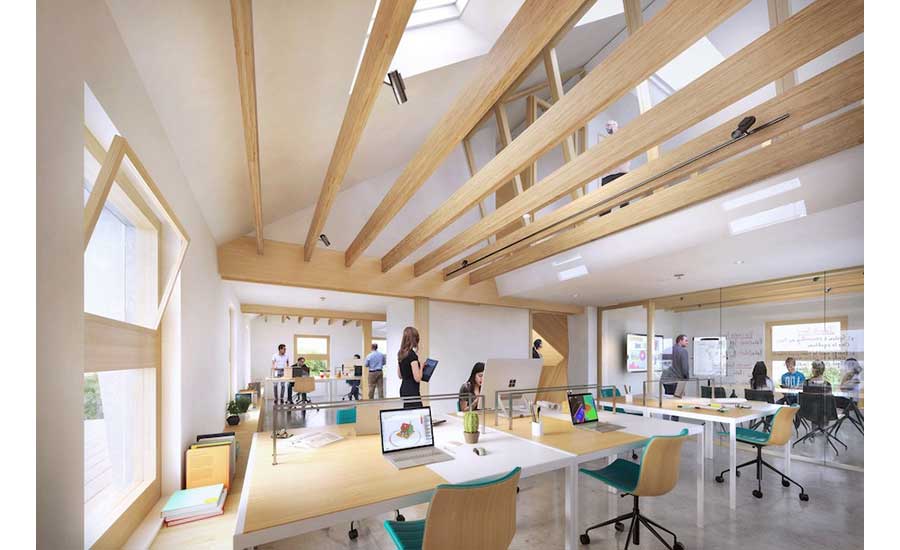Several buildings across the world have achieved net-zero or positive-energy status. But not as many retrofitted buildings have deployed similar green building measures to become truely passive structures. That’s why a group of students and researches at Harvard University are currently renovating a building on Harvard’s campus as a prototype for ultra-efficient retrofits.
The Harvard Center for Green Buildings and Cities (CGBC) at the Harvard University Graduate School of Design (GSD) are using their own building for a prototype in what they are calling the HouseZero project. When the retrofit is complete, the pre-1940s stick-built house will not have an HVAC system or have a need to use electric light during the day. It will be achieve 100% ventilation, create almost zero energy and produce zero carbon emissions, including embodied energy of materials.
Thermal mass and a ground source heat pump will replace the HVAC system, a solar vent will “instigate buoyancy-driven ventilation and triple-glazed windows will employ natural cross ventilation through a manual and automated system that monitors for temperature, humidity and air quality,” according to a press release about the project.
These systems are typically only used in new buildings, says Ali Malkawi, professor of architectural technology at the School of Design and the founding director of the Center for Green Buildings and Cities. “We want to demonstrate what’s possible, show how this can be replicated almost anywhere, and solve one of the world’s biggest energy problems—inefficient existing buildings,” Malkawi says in the press release.
Snøhetta is serving as lead architect for the project as well as the interior and landscape architect. Skanska Technology created the energy concept along with CGBC research teams. Skanska USA performed preconstruction work while Columbia Construction will manage a construction period that could last as much as nine months.
Designing the building envelope in layers, along with a series of technologies, will allow the building to adjust to optimal interior climates. “All components of the building are sensored to generate data that will allow the building to adjust itself and fuel CGBC research focused on actual data and simulated environments,” Malkawi says.
The building itself will also double as a laboratory to help develop technologies, façades, and materials for other ultra-efficient buildings. The “flexible, highly-controlled and monitored experimental lab” will be connected to the building’s energy exchange system.
HouseZero will not seek certification rating from the US Green Building Council’s Leadership in Energy and Environmental Design or the Living Building Challenge because, as the press release notes, “it wants to demonstrate an entirely new paradigm for ultra-efficiency, one that is localized and focused on curbing energy demand, with energy production secondary to that.”
Mohsen Mostafavi, Dean of Harvard Graduate School of Design, says in the press release, “The HouseZero project represents precisely the kind of transformative impact through design that we strive to make at the GSD. With this test case–retrofitting a house in Cambridge into a new work space–the Center for Green Buildings and Cities directly engages the ways in which we can reimagine the future of many of our cities and their utilization of resources.”


Recent Comments
Article
MAYOR WALSHES TWEEKING OF PRESERVATION LAWS"JUST THIS ONCE"
Correction
GE's new HQ